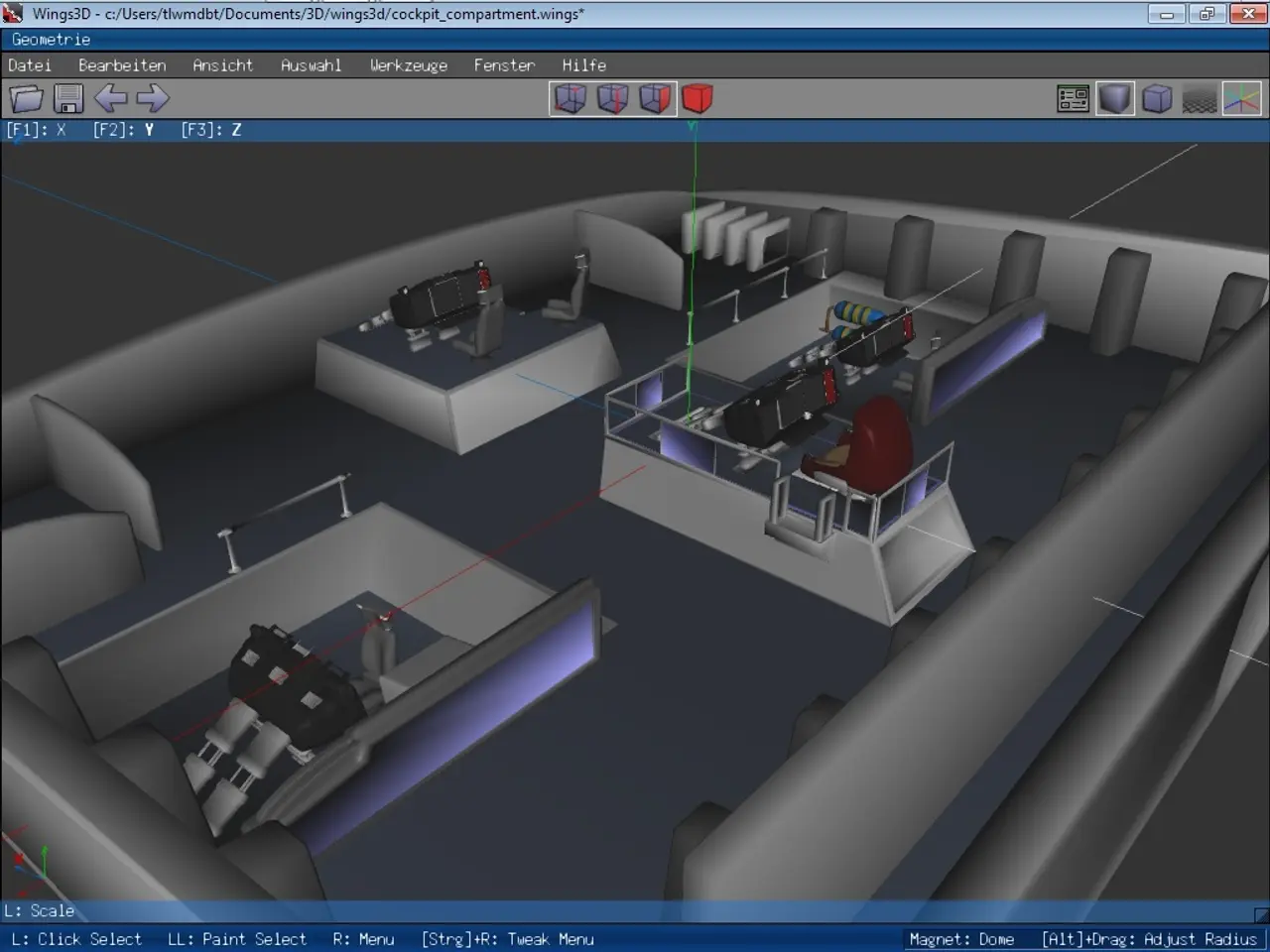Innovative Diamond-based Quantum Battery withstands auto-drain, opening possibilities for extended energy preservation
Researchers have unveiled a groundbreaking design for a quantum battery (QB) that utilizes nitrogen-vacancy (NV) centers in diamond. This new approach aims to tackle the persistent issue of spontaneous energy loss, or self-discharging, which is a major challenge in quantum batteries.
Key Components of the Design
The design leverages the unique properties of NV centers, defects in diamond's crystal lattice where a nitrogen atom replaces a carbon atom, and an adjacent carbon atom is missing. The electronic spin of the NV center acts as the quantum battery, interacting with the spin bath of ({}^{13})C nuclei in the diamond lattice.
To mitigate self-discharging, the interactions between the NV center and the surrounding spin bath are engineered to suppress self-discharging intrinsically. Unlike previous schemes that require a quantum charger, which can decrease the energy available in the battery due to charger-battery entanglement, this design does not need external intervention.
Benefits and Challenges
Quantum batteries based on NV centers have the potential to offer faster charging, higher charging capacity, and more efficient energy extraction compared to traditional batteries. This is due to the quantum effects, such as entanglement and superposition, which they exploit.
However, quantum batteries remain in the early stages of development. The main challenges include scaling up these devices, integrating them into existing technologies, and overcoming decoherence, which can cause energy loss. Researchers are working to harness controlled decoherence for beneficial effects in certain contexts.
A Step Towards Practical Applications
By optimizing the ratio of coherent to total ergotropy, the battery can hold onto energy longer and release more useful work. This new design represents a significant step towards practical applications of quantum batteries, potentially enabling more efficient energy storage solutions for future electronics.
The team's quantum battery model takes full advantage of the NV center in diamond, a platform well-studied and stable at room temperature. The electron spin of the nitrogen-vacancy center acts as the core of the battery, and the hyperfine interaction between the NV center's electron and nitrogen nucleus allows researchers to control how energy is stored and maintained within the quantum battery.
Jun-Hong An and his colleagues shared their findings in conversation with Phys.org. The study was published in the journal Physical Review Letters. The new design tackles the problem of spontaneous energy loss, a major flaw in quantum batteries, and brings them closer to practical reality.
- The unique properties of nitrogen-vacancy (NV) centers in diamond, a platform well-studied and stable at room temperature, are leveraged in the design of the quantum battery.
- The new approach to quantum batteries, based on NV centers, could offer faster charging, higher charging capacity, and more efficient energy extraction compared to traditional batteries due to the exploitation of quantum effects like entanglement and superposition.
- The proposed design for a quantum battery using NV centers mitigates self-discharging, a major challenge in quantum batteries, without the need for external intervention like a quantum charger.
- Research in robotics, science, technology, innovation, finance, energy, and the industry could potentially benefit from practical applications of quantum batteries, such as more efficient energy storage solutions for future electronics.




